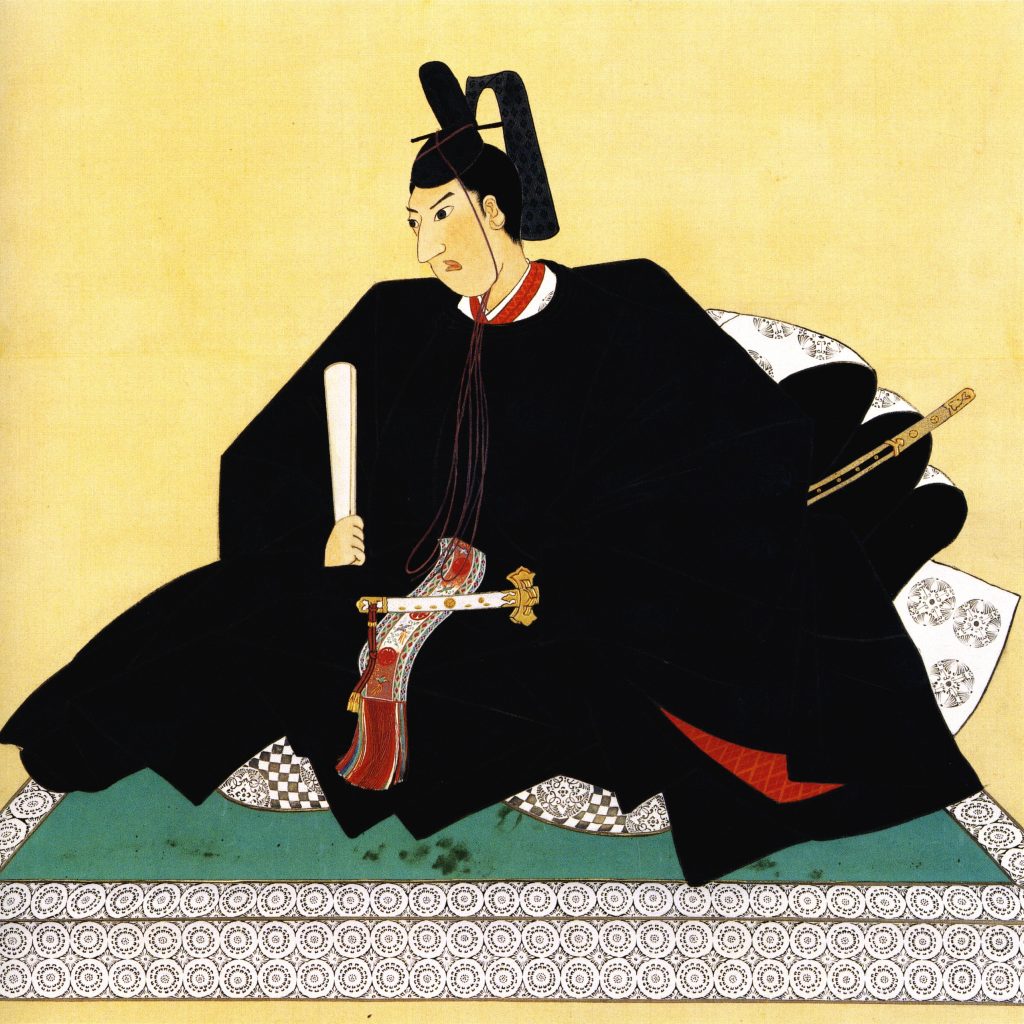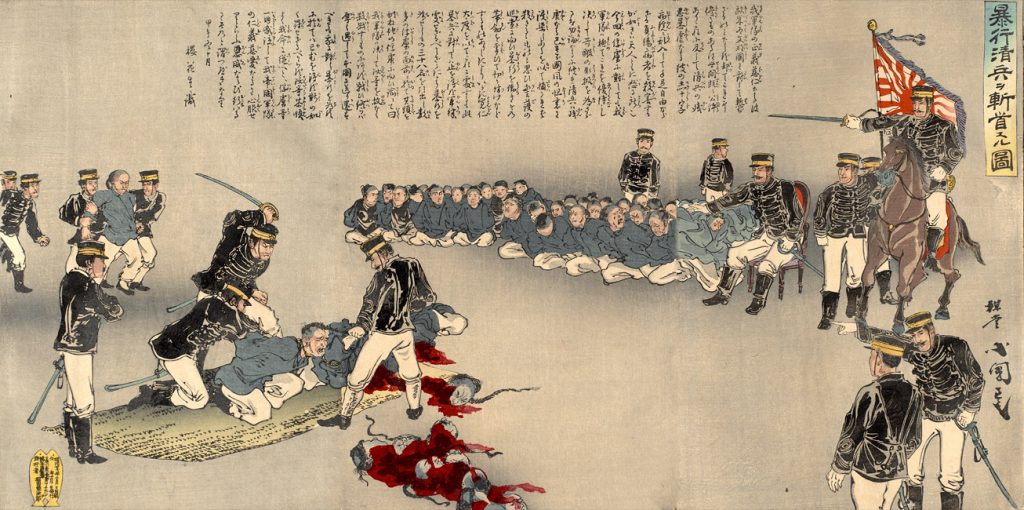Following roughly two and a half centuries of Tokugawa Bakufu rule, Japan rapidly transformed itself into one of the world’s preeminent powers, in a transition that occurred “overnight” in historical terms. This transition, historic in both its pace and effectiveness, can be understood as the result of a number of interconnected central factors, most prominent being China’s fate during the mid-19th century, Commodore Mathew C. Perry’s “gunboat diplomacy” and the larger implications of the treaty of Kanagawa, as well as the general discontent of several daimyo towards the Bakufu system.

Fig. 1. Tokugawa Iemochi, the 14th Shogun of the Tokugawa Bakufu, ruling from 1858 – 1866
Matthew C. Perry & The Treaty of Kanagawa
Following the signing of the Treaty of Nanking, in 1842, the United-States wanted to join nations such as Britain in carving up trade opportunities and ports in China. Naturally, sailing from California, Japan is located directly on the route to China. Moreover, the North Pacific was home to thousands of whales, prompting hundreds of American whalers to hunt in these waters. These two factors of geography prompted the United-States to seek trade opportunities with the Tokugawa Bakufu, initially requesting that the Bakufu open its ports to sell coal, food, and water to American ships, and to provide emergency aid to distressed American crews near Japan. Eleven ears after the Treaty of Nanking, on July 8th 1853, Matthew C. Perry, an American navy commodore on orders from President Millard Filmore, sailed into Edo Bay to deliver a letter requesting that Japanese foreign trade be resumed. After delivering the letter, Perry left, promising to return within a year for a reply to the President’s request. On the 14th of February, 1854, Perry returned with an eight-ship armada, leveeing the threat of force against the Tokugawa Bakufu, effectively forcing an agreement to be signed. On March 31st, 1854, Japan signed the Treaty of Kanagawa (Yokohama), which opened two ports, Shimoda and Hakodate, to shipwrecked American sailors and American trade. This prompted Britain, Russia, and France to all sign similar agreements, each completed before 1856.

Fig. 2. Commodore Matthew C. Perry and his Armada, on orders from the President, arrive in Edo Bay (1854)
The Modernization Impetus
These treaties expanded the Japanese’s understanding of the world around them. The nation was impressed by American technological superiority, and the Japanese soon realized that in order to avoid the fate of China, they would need to modernize. Many began to realize that the Tokugawa, which had ruled Japan for centuries, were inept at facing the challenges of the 19th century. In order for Japan to survive, thus modernizing, it would have to do away with the system of military governance of the past. In 1868, leaders from the two remote southern domains of Satsuma and Choshu seized the Imperial Palace in Kyoto in an effort to restore the power of the Meiji emperor. Merely fourteen years after the Treaty of Kanagawa, the Tokugawa Bakufu, ruling for over two centuries, was brought to a sudden end. Japanese leaders began reorganizing the nation, sending convoys the world over to study all facets of modern life in nations around the globe. With this data, Japan adopted practices similar to many western nations, including American business practices, French legal systems, British naval structure, and most importantly, Germany’s authoritarian military-machine. Japan modelled itself most closely along the lines of Bismarck’s empire.
Success of Modernization & Its Effects Pre-WWI
Toshio Mizuuchi, an Osaka-based geographer, has attributed the rapidly successful modernization of Japan, in all aspects, to the proper execution of development policies and the establishment of transportation facilities. He notes five specific policies as being central to this transition:
- Policy of river & flood control, and water resource management
- Road construction & maintenance
- Harbour construction & maintenance
- Railway construction
- Policy of city & regional planning
Bearing these policies in mind, Japan’s remarkably efficient transition from a quasi-feudal state, into a modern world power begins to make sense. In 1894, a mere 26 years after the Meiji Restoration, Japan attacked China, forcing an indemnity payment, the release of Korea, later annexed by the Japanese in 1910, and the release of Taiwan (then referred to as Formosa). Ten years later, in 1904, Japan attacked Russia, shocking the world by winning the war on both land and sea. If Japan’s victory over China turned heads, her victory over Russia forced world powers to take note that not only had Japan become an economic power, but a prominent military force as well. Japan seized the southern half of Sakhalin Island, and Russia’s railroad and port concessions in southern Manchuria.

fig. 3. Japanese soldiers decapitate Chinese POW’s during the First Sino-Japanese War. (Utagawa Kokunimasa, October 1894)
Driven by a fear of annexation, and fuelled by a desire to modernize, the end of Tokugawa rule and the Bakufu system, resulted in the creation of a modern economic & military superpower in Japan. Her rapid succession, all these years later, still challenges most understandings of national transition, however, as history has shown, this desire for superiority would have disastrous consequences for East-Asia, and eventually, Japan itself.
Sources
Gordon, Andrew. “A Modern History of Japan”. Oxford University Press, 2014. P.47-55.
Karan, Pradyumna P. “Japan In the 21st Century: Environment, Economy, and Society”. The University Press of Kentucky, 2005. P. 61-63.
Figure 1: https://commons.wikimedia.org/wiki/File:Toku14-2.jpg
Figure 2: https://commons.wikimedia.org/wiki/File:Визит_Перри_в_1854_году.jpg
Figure 3: https://ocw.mit.edu/ans7870/21f/21f.027/throwing_off_asia_01/2000_380_07_l.html
